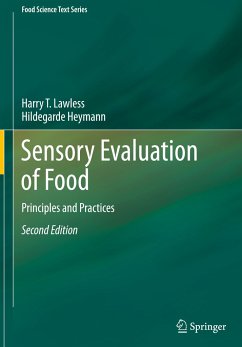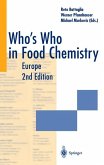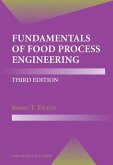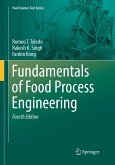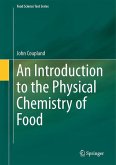Sensory Evaluation of Food covers all the basic techniques of sensory testing, from simple discrimination tests to home use placements for consumers. The fundamental theories, both psychological and statistical, are presented, which form the basis and rationale for sensory test design.
The ?eld of sensory science has grown exponentially since the publication of the p- vious version of this work. Fifteen years ago the journal Food Quality and Preference was fairly new. Now it holds an eminent position as a venue for research on sensory test methods (among many other topics). Hundreds of articles relevant to sensory testing have appeared in that and in other journals such as the Journal of Sensory Studies. Knowledge of the intricate cellular processes in chemoreception, as well as their genetic basis, has undergone nothing less than a revolution, culminating in the award of the Nobel Prize to Buck and Axel in 2004 for their discovery of the olfactory receptor gene super family. Advances in statistical methodology have accelerated as well. Sensometrics meetings are now vigorous and well-attended annual events. Ideas like Thurstonian modeling were not widely embraced 15 years ago, but now seem to be part of the everyday thought process of many sensory scientists. And yet, some things stay the same. Sensory testing will always involve human participants. Humans are tough measuring instruments to work with. They come with varying degrees of acumen, training, experiences, differing genetic equipment, sensory capabilities, and of course, different preferences. Human foibles and their associated error variance will continue to place a limitation on sensory tests and actionable results. Reducing, controlling, partitioning, and explaining error variance are all at the heart of good test methods and practices.
The ?eld of sensory science has grown exponentially since the publication of the p- vious version of this work. Fifteen years ago the journal Food Quality and Preference was fairly new. Now it holds an eminent position as a venue for research on sensory test methods (among many other topics). Hundreds of articles relevant to sensory testing have appeared in that and in other journals such as the Journal of Sensory Studies. Knowledge of the intricate cellular processes in chemoreception, as well as their genetic basis, has undergone nothing less than a revolution, culminating in the award of the Nobel Prize to Buck and Axel in 2004 for their discovery of the olfactory receptor gene super family. Advances in statistical methodology have accelerated as well. Sensometrics meetings are now vigorous and well-attended annual events. Ideas like Thurstonian modeling were not widely embraced 15 years ago, but now seem to be part of the everyday thought process of many sensory scientists. And yet, some things stay the same. Sensory testing will always involve human participants. Humans are tough measuring instruments to work with. They come with varying degrees of acumen, training, experiences, differing genetic equipment, sensory capabilities, and of course, different preferences. Human foibles and their associated error variance will continue to place a limitation on sensory tests and actionable results. Reducing, controlling, partitioning, and explaining error variance are all at the heart of good test methods and practices.
From the reviews of the second edition:
"This volume is an academic text, bringing together theory, methodologies and analysis techniques of sensory evaluation and references to thousands of research articles on sensory science in a logical and practical manner. ... its primary aim is as a textbook for university-level sensory science modules. ... also serves as an over-arching technical manual and resource for practicing food and drink technologists and sensory scientists. ... The book is essential reading for those in the sensory evaluation sphere and serves as an excellent and practical reference." (Patricia Stefanowicz, Journal of Wine Research, Vol. 24 (1), 2013)
"This volume is an academic text, bringing together theory, methodologies and analysis techniques of sensory evaluation and references to thousands of research articles on sensory science in a logical and practical manner. ... its primary aim is as a textbook for university-level sensory science modules. ... also serves as an over-arching technical manual and resource for practicing food and drink technologists and sensory scientists. ... The book is essential reading for those in the sensory evaluation sphere and serves as an excellent and practical reference." (Patricia Stefanowicz, Journal of Wine Research, Vol. 24 (1), 2013)

